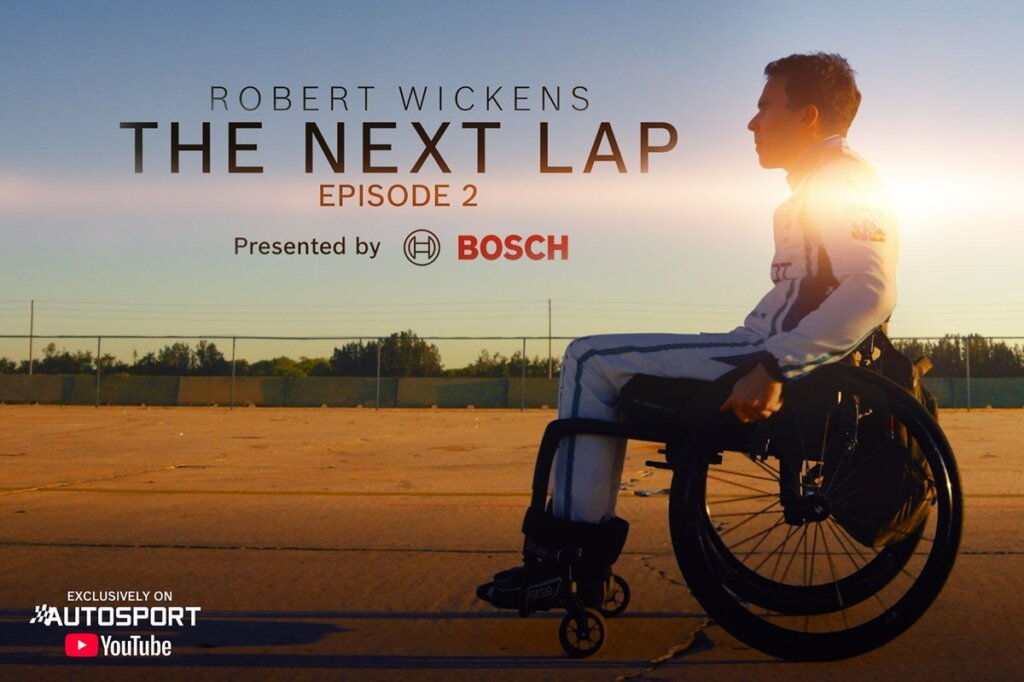Overcoming Challenges and Celebrating Breakthroughs: Robert Wickens’ Return to Racing
A New Beginning at Long Beach
Robert Wickens entered his inaugural race of the season in the IMSA WeatherTech SportsCar Championship at Long Beach with a clear objective: “To finish with pride and confidence.” The Canadian driver achieved this goal, demonstrating resilience and skill during his first competitive outing in a Chevrolet Corvette Z06 GT3.R, meticulously modified to accommodate hand controls. While the race marked a significant milestone in his comeback journey, it also left a sense of what might have been for Wickens and his teammate Tommy Milner.
Technological Triumphs and Personal Progress
One of the standout achievements was the flawless performance of Bosch Motorsport’s second-generation electronic brake system, which operated seamlessly throughout the 100-minute race. This advanced system played a crucial role in enabling Wickens to showcase his speed at this elite level of motorsport for the first time since his life-altering accident in IndyCar in 2018. His return to competitive racing is a testament to both technological innovation and his unwavering determination.
Impressive Qualifying and Race Performance
Wickens demonstrated his potential early on by posting the fastest time in the second free practice session, skillfully navigating the tight confines of the 1.97-mile Long Beach Grand Prix Circuit in his DXDT Racing Chevy. Despite encountering a side-swipe from another vehicle during his qualifying lap-damaging his suspension-he still finished just over half a second shy of pole position.
“Qualifying was a perfect day,” Wickens recalls, emphasizing his affinity for street circuits. “We went into it optimistic, believing we had a shot at pole on our debut. Honestly, if someone had told me last week that I’d be in this position, I’d have thought they were dreaming.”
However, the final qualifying results placed him eighth, a respectable position considering the circumstances. Wickens credits the Bosch electronic hand control system for providing the precise control needed, expressing disappointment that technical issues prevented him from fully capitalizing on his qualifying potential.
The Significance of Advanced Brake Technology
The innovative brake system developed by Bosch has been a pivotal element in Wickens’ racing resurgence. Jordan Smart, a motorsport application engineer at Bosch Motorsport, explains that this system is “deeply integrated with the vehicle,” allowing for a more intuitive driving experience. Unlike traditional hydraulic brakes, the Bosch Electronic Brake System (EBS) converts the driver’s steering wheel inputs into electrical signals, which are then transformed into brake pressure-essentially a true brake-by-wire setup.
This technology represents a significant leap forward, especially for drivers with physical limitations, as it offers enhanced control and safety. Wickens’ previous experience with hydraulic brakes on his Hyundai TCR car in the Michelin Pilot Challenge series laid the groundwork for this transition, making his return to the track more accessible and promising.
Race Day Dynamics and Pit Stop Challenges
Heading into the Long Beach race on April 12, Wickens and Milner aimed to improve their starting position from eighth on the grid. However, the nature of IMSA’s driver change procedures posed logistical hurdles. DXDT Racing anticipated that the necessary driver swaps-particularly for Wickens, who required assistance to exit the vehicle-would cost valuable time in the pits.
Bryan Sellers, the team’s program manager, explains, “It takes a bit longer for us because Robert needs to be carefully lifted out of the car. Coordinating the driver change involves multiple steps, which inevitably impacts our race strategy.”
This delay caused Milner to drop from seventh to tenth during the pit stops. Despite a strong drive that saw him climb as high as fifth, an incident occurred as he overtook a BMW-receiving a tap that dislodged the car’s bodywork. Race officials mandated a pit stop to secure the loose panel, which ultimately resulted in a 15th-place finish in the class for the DXDT Chevrolet.
Reflecting on the Race and Future Prospects
Wickens reflects on the race, stating, “Safety always comes first. After the contact, our rear bumper was loose, and the black flag required us to pit for repairs. At that point, our chances of a top finish were slim, but I believe the overall performance was promising.”
Jordan Smart emphasizes that the technological tools provided to Wickens were instrumental in unlocking his potential. “The system we developed gave Robert the ability to perform at a competitive level. That’s the real achievement-equipping him with the right tools to succeed.”
Looking Ahead: A Roadmap for Resilience and Innovation
Wickens’ journey exemplifies how cutting-edge technology and unwavering perseverance can redefine what’s possible in motorsport. As he continues to participate in the upcoming IMSA sprint races, the focus remains on refining these systems and overcoming logistical challenges. His story inspires not only racing fans but also anyone facing adversity, illustrating that with the right support and innovation, the impossible can become achievable.
Stay informed with the latest updates on Robert Wickens and IMSA racing by subscribing to our real-time news alerts.

